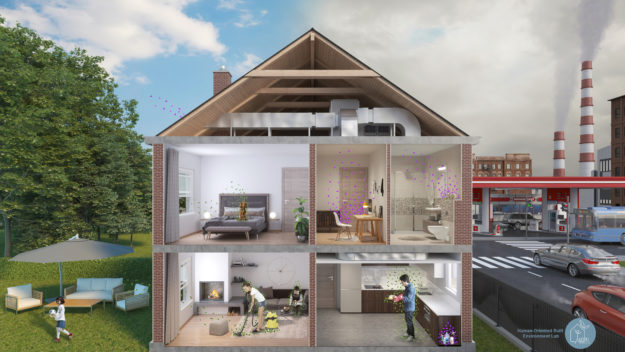Buildings constitute a major source of particle and gaseous pollutants to which building occupants are exposed. This exposure is strongly associated with various health and well-being outcomes. The overall aim of this interdisciplinary study is to investigate the processes by which humans shape the microbiology and chemistry of indoor air through emissions of particles and gases, their secondary transformation in indoor air and the resulting contribution to personal inhalation exposure.
Humans have been recently identified as an important source of air pollution, a factor often neglected. Their contribution can indeed considerably influence the chemical and biological pollutant load in indoor air. These emissions have been linked to eye and pulmonary irritation, but the health effects remain poorly understood. Thus, there is a need to elucidate the underlying mechanisms that drive the emission, transformation and dispersal of particles, microbes and volatile organic compounds (VOCs) from humans.
The project’s objectives are to
- Characterise particles, microbes and VOCs emitted from humans, and their transformation in indoor air under various personal (clothing, diet, lifestyle, sex) and environmental conditions (relative humidity, ozone concentration);
- Characterise the mechanisms of particulate, microbial and VOC dispersion from humans;
- Quantify the contribution of human emissions to personal inhalation exposure.
